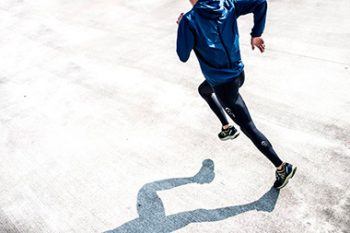Runners Toe with OnePointHealth
Runners Toe AKA ‘The Black Plague’ for Runners
For most people, training for a major event is often accompanied by a variety of injuries. Commonly these injuries are minor. However, they can be detrimental to your preparation, forcing you to reduce training frequency and/or intensity. For me one of these injuries was a bruised toenail, AKA runners toe and clinically termed ‘subungual hematoma’ (SH).
What…
A Subungual Hematoma is a collection of blood underneath a toenail in response to trauma. Although not a serious medical condition, it can be extremely painful for an injury of its size. If you’re a long distance runner you’ve most likely experienced this injury. They occur when there is repetitive downward pressure on your toenail, which leads to bleeding and pooling of blood underneath the nail plate. This pooling of blood increases pressure under the nail and is often the cause of pain.
How…
In runners SH’s most often occur due to mal-fitting shoegear. If your shoes are too tight, the constant pressure damages the toe and toenail. If they’re too loose, your foot tends to slide back and forth inside the shoe resulting in the same problem. SH’s commonly occur on the second toe and this is usually due to this toe being the longest. When buying shoes it important that you get your feet measured to the longest toe. Too man times we see shoes being fitted to the first toe, when the second toe is the longest. Also, your feet swell when you run, further increasing the risk of shoe/toe friction. Long toenails also increase the risk SH’s.
Avoid it…
- Get your running shoes fitted by a podiatrist or an experienced shoe-fitter.
- To accommodate for your feet swelling, get fitted for running shoes in the afternoon or soon after a run.
- Trim your toenails regularly and straight across, but not too short that the remaining nail or nail bed is exposed to shoe/toe irritation.
- Keep your feet as dry as possible (wear socks that wick moisture away from the skin).
- Use lacing techniques that hold your foot firmly in your shoe to prevent excessive movement and friction, particularly if running downhill regularly.
Fix it…
- In minor cases, the injury resolves itself within a day or two of rest.
- If the nail is partially torn, tape it down (for protection) until a new nail begins to form.
- Don’t pull the damaged nail off. It often falls off on its own.
- Keep the area as clean and dry (no cotton socks) as possible.
- Wear a shoe with a bigger, wider toe box to prevent further irritation.
See a podiatrist if the pain persists or you see signs of infection like redness, swelling or pain that persist longer than a few days.










